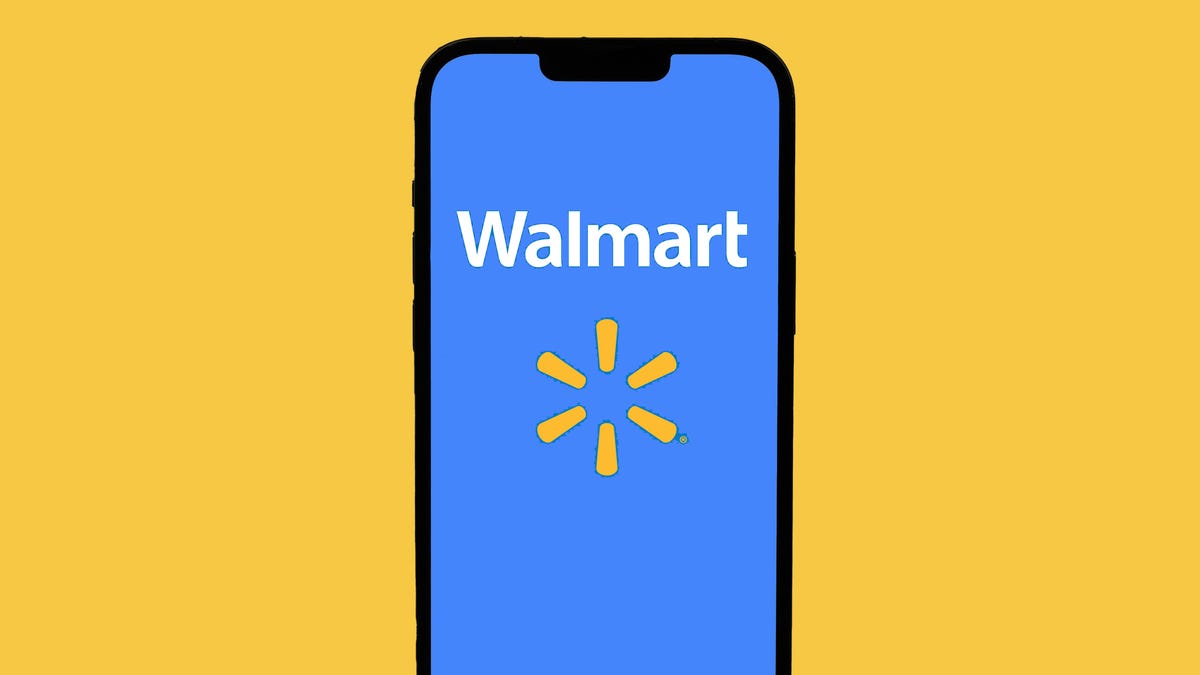Technologies
I Just Tried Photoshop’s New AI Tool. It Makes Photos Creative, Funny or Unreal
Adobe’s Firefly generative AI tool offers a new way to fiddle with photos. Expect a lot of fun and fakery.

Adobe is building generative AI abilities into its flagship image-editing software with a new Photoshop beta release Tuesday. The move promises to release a new torrent of creativity even as it gives us all a new reason to pause and wonder if that sensational, scary or inspirational photo you see on the internet is actually real.
In my tests, detailed below, I found the tool impressive overall but far from perfect. Adding it directly to Photoshop is a big deal, letting creators experiment within the software tool they’re likely already using without excursions to Midjourney, Stability AI’s Stable Diffusion or other outside generative AI tools.
With Adobe’s Firefly family of generative AI technologies arriving in Photoshop, you’ll be able to let the AI fill a selected part of the image with whatever it thinks most fitting – for example, replacing road cracks with smooth pavement. You can also specify the imagery you’d like with a text prompt, such as adding a double yellow line to the road.
Firefly in Photoshop also can also expand an image, adding new scenery beyond the frame based on what’s already in the frame or what you suggest with text. Want more sky and mountains in your landscape photo? A bigger crowd at the rock concert? Photoshop will oblige, without today’s difficulties of finding source material and splicing it in.
Photoshop’s Firefly skills can be powerful. In Adobe’s live demo, the were often able to match a photo’s tones, blend in AI-generated imagery seamlessly, infer the geometric details of perspective even in reflections and extrapolate the position of the sun from shadows and sky haze.
Such technologies have been emerging over the last year as Stable Diffusion, Midjourney and OpenAI’s Dall-Ecaptured the imaginations of artists and creative pros. Now it’s built directly into the software they’re most likely to already be using, streamlining what can be a cumbersome editing process.
«It really puts the power and control of generative AI into the hands of the creator,» said Maria Yap, Adobe’s vice president of digital imaging. «You can just really have some fun. You can explore some ideas. You can ideate. You can create without ever necessarily getting into the deep tools of the product, very quickly.»
Now you’d better brace yourself for that future.
Photoshop’s Firefly AI imperfect but useful
In my testing, I frequently ran into problems, many of them likely stemming from the limited range of the training imagery. When I tried to insert a fish on a bicycle to an image, Firefly only added the bicycle. I couldn’t get Firefly to add a kraken to emerge from San Francisco Bay. A musk ox looked like a panda-moose hybrid.
Less fanciful material also presents problems. Text looks like an alien race’s script. Shadows, lighting, perspective and geometry weren’t always right.
People are hard, too. On close inspection, their faces were distorted in weird ways. Humans added into shots were positioned too high in the frame or in other unconvincing ways.
Still, Firefly is remarkable for what it can accomplish, particularly with landscape shots. I could add mountains, oceans, skies and hills to landscapes. A white delivery van in a night scene was appropriately yellowish to match the sodium vapor streetlights in the scene. If you don’t like the trio of results Firefly presents, you can click the «generate» button to get another batch.
Given the pace of AI developments, I expect Firefly in Photoshop will improve.
«This is the future of Photoshop,» Yap said.
Automating image manipulation
For years, «Photoshop» hasn’t just referred to Adobe’s software. It’s also used as a verb signifying photo manipulations like slimming supermodels’ waists or hiding missile launch failures. AI tools automate not just fun and flights of fancy, but also fake images like an alleged explosion at the Pentagon or a convincingly real photo of the pope in a puffy jacket, to pick two recent examples.
With AI, expect editing techniques far more subtle than the extra smoke easily recognized as digitally added to photos of an Israeli attack on Lebanon in 2006.
It’s a reflection of the double-edged sword that is generative AI. The technology is undeniably useful in many situations but also blurs the line between what is true and what is merely plausible.
For its part, Adobe tries to curtail problems. It doesn’t permit prompts to create images of many political figures and blocks you for «safety issues» if you try to create an image of black smoke in front of the White House. And its AI usage guidelines prohibit imagery involving violence, pornography and «misleading, fraudulent, or deceptive content that could lead to real-world harm,» among other categories. «We disable accounts that engage in behavior that is deceptive or harmful.»
Firefly also is designed to skip over styling prompts like that have provoked serious complaints from artists displeased to see their type of art reproduced by a data center. And it supports the Content Authenticity Initiative‘s content credentials technology that can be used to label an image as having been generated by AI.
Generative AI for photos
Adobe’s Firefly family of generative AI tools began with a website that turns a text prompt like «modern chair made up of old tires» into an image. It’s added a couple other options since, and Creative Cloud subscribers will also be able to try a lightweight version of the Photoshop interface on the Firefly site.
When OpenAI’s Dall-E brought that technology to anyone who signed up for it in 2022, it helped push generative artificial intelligence from a technological curiosity toward mainstream awareness. Now there’s plenty of worry along with the excitement as even AI creators fret about what the technology will bring now and in the more distant future.
Generative AI is a relatively new form of artificial intelligence technology. AI models can be trained to recognize patterns in vast amounts of data – in this case labeled images from Adobe’s stock art business and other licensed sources – and then to create new imagery based on that source data.
Generative AI has surged to mainstream awareness with language models used in tools like OpenAI’s ChatGPT chatbot, Google’s Gmail and Google Docs, and Microsoft’s Bing search engine. When it comes to generating images, Adobe employs an AI image generation technique called diffusion that’s also behind Dall-E, Stable Diffusion, Midjourney and Google’s Imagen.
Adobe calls Firefly for Photoshop a «co-pilot» technology, positioning it as a creative aid, not a replacement for humans. Yap acknowledges that some creators are nervous about being replaced by AI. Adobe prefers to see it as a technology that can amplify and speed up the creative process, spreading creative tools to a broader population.
«I think the democratization we’ve been going through, and having more creativity, is a positive thing for all of us.»
Technologies
You’ll Soon Be Able to Buy Walmart Products Through ChatGPT
OpenAI’s chatbot already connects to Etsy and Shopify. Now you can buy bananas too.

OpenAI and Walmart will soon offer shopping via AI through ChatGPT, the retail giant said in a press release on Tuesday.
While using ChatGPT’s Instant Checkout feature, customers can buy groceries, electronics or other essentials within the chatbot interface.
Walmart has its own AI assistant in its app named Sparky. With Sparky, customers can ask questions about products and get summaries of reviews to find the best item.
Don’t miss any of our unbiased tech content and lab-based reviews. Add CNET as a preferred Google source.
«For many years now, e-commerce shopping experiences have consisted of a search bar and a long list of item responses. That is about to change,» Walmart CEO Doug McMillon said in a statement. «There is a native AI experience coming that is multi-media, personalized and contextual. We are running towards that more enjoyable and convenient future with Sparky and through partnerships including this important step with OpenAI.»
When asked for comment, Walmart referred to its press release. Walmart also said it wouldn’t discuss the financial terms of the agreement at this time.
«We’re excited to partner with Walmart to make everyday purchases a little simpler. It’s just one way AI will help people every day under our work together,» OpenAI CEO Sam Altman said in a press release.
OpenAI referred to Walmart’s press release when asked for comment.
The latest deal with Walmart comes as OpenAI tries to make ChatGPT an all-in-one shopping experience. AI chatbots are increasingly being used as vehicles for online shopping. They can synthesize reviews from across the internet and give people direct answers to shopping questions. Already, ChatGPT connects with Etsy and Shopify with its Instant Checkout feature, allowing people to buy directly. OpenAI also added more shopping features in ChatGPT Search earlier this year.
(Disclosure: Ziff Davis, CNET’s parent company, in April filed a lawsuit against OpenAI, alleging it infringed Ziff Davis copyrights in training and operating its AI systems.)
Technologies
OpenAI Will Loosen ChatGPT’s Mental Health Guardrails and Allow Erotica for Adult Users
Sam Altman said the company will ease limits for adults after rolling out age verification.

ChatGPT is treading cautiously right now, but the chatbot may become more risqué by the end of the year.
In recent weeks, the generative AI chatbot has been operating under somewhat stringent limitations, as OpenAI tried to address concerns that it was not handling sensitive mental health issues well. But CEO Sam Altman said in a post on X Tuesday that the company would ease some of those restrictions because it’s «been able to mitigate the serious mental health issues.»
Though Altman didn’t elaborate on what tools are being used to address the problem, OpenAI recently announced new parental controls in ChatGPT.
CNET reached out to OpenAI for details, but the company did not immediately respond to a request for comment. (Disclosure: Ziff Davis, CNET’s parent company, in April filed a lawsuit against OpenAI, alleging it infringed Ziff Davis copyrights in training and operating its AI systems.)
Other changes are also expected. Altman said the company could allow «erotica» for verified adult users as it implements an «age-gating» system, or age-restricted content, in December. The mature content is part of the company’s «treat adult users like adults» principle, Altman said.
Altman’s post also announced a new version of ChatGPT in the next few weeks, with a personality that behaves more like the company’s GPT-4o model. Chatbot users had complained after the company replaced 4o with the impersonal GPT-5 earlier this year, saying the new version lacked the engaging and fun personality of previous chatbot models.
«If you want your ChatGPT to respond in a very human-like way, or use a ton of emoji, or act like a friend, ChatGPT should do it (but only if you want it, not because we are usage-maxxing),» Altman wrote.
Don’t miss any of our unbiased tech content and lab-based reviews. Add CNET as a preferred Google source.
After OpenAI was sued by parents who alleged ChatGPT contributed to their teen son’s suicide, the company imposed an array of new restrictions and changes, including parental controls, alerts for risky behavior and a teen-friendly version of the chatbot. In the summer, OpenAI implemented break reminders that encourage people to occasionally stop chatting with the bot.
On Tuesday, the company also announced the creation of a council of experts on AI and well-being, including some with expertise in psychology and human behavior.
This comes as lawmakers and regulators are ringing the alarm on the risks AI tools pose to people, especially children. On Monday, California Governor Gavin Newsom signed new restrictions on AI companion chatbots into law. Last month, the Federal Trade Commission launched an investigation into several AI companies, including OpenAI.
Technologies
Today’s NYT Strands Hints, Answers and Help for Oct. 15 #591
Here are hints — and the answers — for the NYT Strands puzzle for Oct. 15, No. 591.

Looking for the most recent Strands answer? Click here for our daily Strands hints, as well as our daily answers and hints for The New York Times Mini Crossword, Wordle, Connections and Connections: Sports Edition puzzles.
Today’s NYT Strands puzzle is a fun one, once you understand the theme. Some of the answers are a bit tough to unscramble, so if you need hints and answers, read on.
I go into depth about the rules for Strands in this story.
If you’re looking for today’s Wordle, Connections and Mini Crossword answers, you can visit CNET’s NYT puzzle hints page.
Read more: NYT Connections Turns 1: These Are the 5 Toughest Puzzles So Far
Hint for today’s Strands puzzle
Today’s Strands theme is: Going up?
If that doesn’t help you, here’s a clue: Not an escalator, but…
Clue words to unlock in-game hints
Your goal is to find hidden words that fit the puzzle’s theme. If you’re stuck, find any words you can. Every time you find three words of four letters or more, Strands will reveal one of the theme words. These are the words I used to get those hints but any words of four or more letters that you find will work:
- ROTATE, LOBE, NOPE, RATS, STAR, SAME, LOSE, VOTE, BUTTE, SAMS, BAMS
Answers for today’s Strands puzzle
These are the answers that tie into the theme. The goal of the puzzle is to find them all, including the spangram, a theme word that reaches from one side of the puzzle to the other. When you have all of them (I originally thought there were always eight but learned that the number can vary), every letter on the board will be used. Here are the nonspangram answers:
- ALARM, OPEN, CLOSE, LOBBY, GROUND, BASEMENT
Today’s Strands spangram
Today’s Strands spangram is ELEVATORBUTTONS. To find it, look for the E that’s three letters to the right on the bottom row, and wind straight up, and then straight down.
-

 Technologies3 года ago
Technologies3 года agoTech Companies Need to Be Held Accountable for Security, Experts Say
-

 Technologies3 года ago
Technologies3 года agoBest Handheld Game Console in 2023
-

 Technologies3 года ago
Technologies3 года agoTighten Up Your VR Game With the Best Head Straps for Quest 2
-

 Technologies4 года ago
Technologies4 года agoVerum, Wickr and Threema: next generation secured messengers
-

 Technologies4 года ago
Technologies4 года agoGoogle to require vaccinations as Silicon Valley rethinks return-to-office policies
-

 Technologies4 года ago
Technologies4 года agoBlack Friday 2021: The best deals on TVs, headphones, kitchenware, and more
-

 Technologies4 года ago
Technologies4 года agoOlivia Harlan Dekker for Verum Messenger
-

 Technologies4 года ago
Technologies4 года agoiPhone 13 event: How to watch Apple’s big announcement tomorrow
